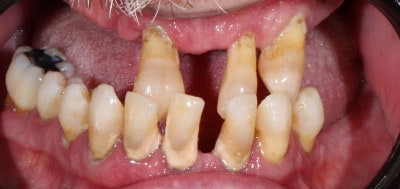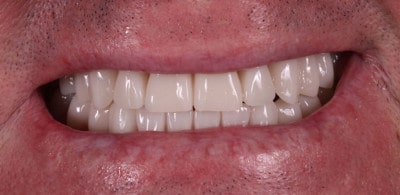 In certain cases where a tooth may be too damaged or too loose to be saved, extraction may be required.
In certain cases where a tooth may be too damaged or too loose to be saved, extraction may be required.
Reasons for a tooth extraction
- Decay has reached deep into the tooth
- Infection has destroyed a large portion of the tooth or surrounding bone
- There is not enough room for all the teeth in your mouth
- To make room for teeth moved with orthodontic treatment
We will take an x-ray of the area to determine the best way to extract the tooth and the appropriate anaesthetic technique required to ensure your comfort and care.
When your extraction is complete, we will give you guidance on what to do at home. It is important that you closely follow the post-extraction aftercare instructions to promote a healthy recovery.
Rest: Rest for a few hours following treatment, and avoid strenuous exercise. Do not rinse for at least 24 hours.
Rinse: For several days following treatment, rinse your mouth gently after meals and before bed, using a mouthwash made by dissolving ½ teaspoon of salt in a glass of warm water. Hold the solution in your mouth for several minutes, discard and repeat 2-3 times.
Food: Avoid hot drinks, alcohol, hard or chewy foods. Choose cool drinks and soft or minced foods. Avoid direct contact with the open wound.
Bleeding: Should slight bleeding occur, sit upright with head and shoulders raised. Apply pressure using a small pad of gauze or clean linen clamped firmly between the jaws for 15 minutes – repeat if necessary. If bleeding persists please contact us.
Pain: Please take whatever pain relief you would usually take for a headache – except aspirin.
It is advisable to avoid smoking for 24 to 48 hours post treatment. To book an appointment, contact Radiant Smiles Dental Care on (08) 9440 3654.
Types of Tooth Extractions
A dental extraction is the removal of a tooth. A tooth may be removed if you are in a lot of pain, this may be caused by tooth decay. To ensure you need an extraction, the dentist will take an x-ray of the area and determine which type of extraction is needed. There are two types of extractions in which I will discuss in further details, these are called a simple or surgical extraction.
Simple Extraction:
A simple tooth extraction is the removal of a tooth that is visible. This type of extraction is more straight forward and can be performed with a local anaesthesia.
Surgical Extraction:
A surgical tooth extraction is more complicated. This type of extraction is performed on a tooth that is still embedded within the gums. To access the tooth, the dentist will make a small incision. Due to this procedure being more complicated, a piece of bone may have to be removed from around your tooth.
A tooth extraction normally takes a few days to recover from. Here are a few steps to help:
- Rest for a few hours after your treatment.
- Rinse your mouth out with water and add ½ teaspoon of salt for several days after your procedure. Hold the solution in your mouth for several minutes, discard and repeat 2–3 times.
- Avoid chewy or hard foods, alcohol and hot drinks as these may irritate the area. It is best to avoid direct contact with the wound so it can heal properly.
We offer the following payment plans:
Zip Pay and Zip Money
After Pay



Related Articles:
- Cosmetic Dentist Perth
- Wisdom Teeth Removal Perth
- Dentures Perth
- Cosmetic Dentistry Perth
- Bone grafting Perth
- Clear aligners Perth
- General Dental
- Oral Hygeine
- Emergency Same-Day Denture Repairs Perth
Check out:



